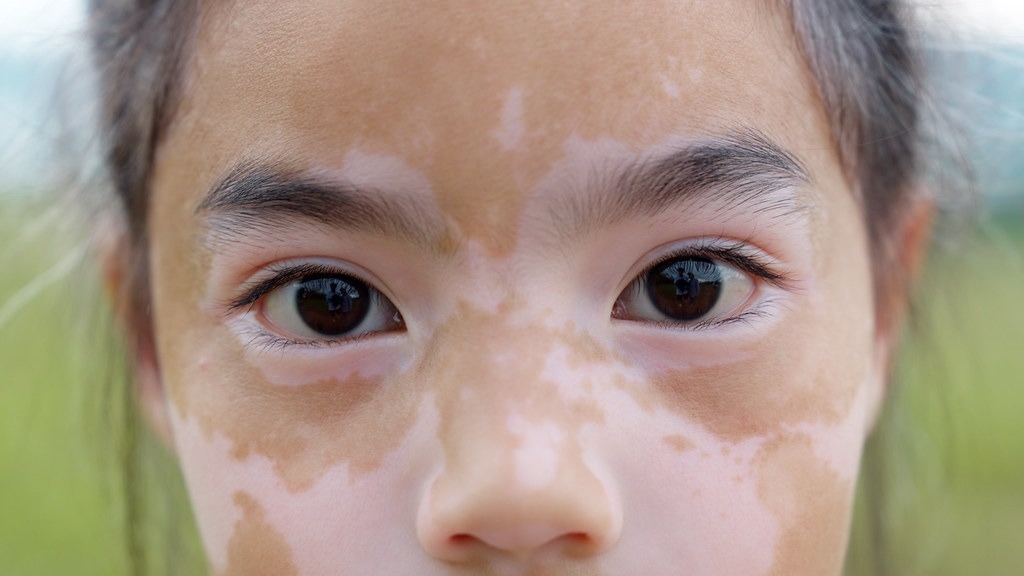As per a new study from the University of Bath, a neural crest cell (a kind of stem cell) starts with the capacity to differentiate into numerous specialist cell kinds, but it also seems to retain the ability to “change its mind” and differentiate again when the situations are appropriate.

Defects in the way neural crest cells differentiate are responsible for pigment cell diseases like vitiligo. Image Credit: University of Bath
As a consequence of this hyper-flexibility, the likelihood for such cells to replace damaged human tissue is expected to be further higher than earlier thought.
Neural crest cells, which can be seen in very young embryos and are crucial for identifying the color of skin and hair, are extremely flexible by nature, giving rise to numerous kinds of vital cells, including neurons. The new study from the University of Bath proposes that their flexibility stays greater than earlier thought, a result that has considerable inferences for regenerative medicine.
So far, it was thought that neural crest cells became committed to turning into a particular cell type very early, following which their fate was sealed. Nevertheless, studies headed by Professor Robert Kelsh from the Department of Life Sciences at Bath propose that they maintain their adaptability even after they turn into visibly differentiated.
This recently found flexibility aids in describing why neural crest stem cells, a significant stem cell kind that can also be readily isolated from adult skin, have extreme capacity as treatments to repair and replace damaged body tissue in several body parts.
The discovery that even after selecting a destiny (for example, developing into skin pigment cells), neural crest cells may be able to “change their mind” and select a new destiny (may be turning into cartilage cells) resolves a long-standing debate among biologists over the behavior of neural crest cell differentiation.
Two Competing Theories
Neural crest cells are multipotent in humans, which implies that they are able to develop into several different kinds of cells, such as cells of the cardiac muscle, peripheral nervous system, and cartilage, along with pigment cells in the hair and skin. These are all cells with extremely specific functions.
So far, two rival theories have been pursued to describe how they did this exactly.
The question of how the fate of these cells becomes decided and restricted has been unclear and much debated for over 40 years.”
Professor Robert Kelsh, Department of Life Sciences, University of Bath
As per the first theory, neural crest cells started to commit to a certain role in the young embryo prior to leaving the place from which they arise—which is the neural tube that develops into the spine and brain. It is thought that by the time they begin migrating to their ultimate destination, whether that is skin, gut, or connective tissue, their destiny is partially limited already (i.e. certain choices are already off the table), and that more and more options get eliminated as they migrate.
The second theory suggests that neural crest cells remain multipotent when they leave the neural tube and commit only to a particular differentiation path upon reaching their destination.
A general thought in the field is that the first model was the more precise of the two. The new research was published in Nature Communications, and it does not find any of these two static theories to be correct.
It would appear that these cells are choosing their fate in a much more dynamic, mobile way and are not narrowing their options irreversibly until much later than we previously thought. This provides experimental biologists with a new, updated model to help them understand the behavior of neural crest cells.”
Professor Robert Kelsh, Department of Life Sciences, University of Bath
It has long been known that neural crest cells employ molecular signals from their environments to transform into one type of cell or another. Nevertheless, Professor Kelsh’s genetic work on zebrafish—a freshwater fish that has several genetic resemblances to humans—discloses that these steps are possibly reversible: eliminate the signals and the cells return back to a more primitive state, where their capacity to distinguish differently is restored.
“Our work shows these cells become biased by their environment. Take them out of that environment and they relax back to a more broadly competent state, likely capable of becoming anything,” said Professor Robert Kelsh.
He concluded: “Our findings will be of interest to other stem-cell researchers, as they give us a theoretical understanding of how neural crest cells might be used in medicine to repair any number of defects, from skin-pigmentation defects such as vitiligo to defects of the nervous system.”
Source:
Journal reference:
Subkhankulova, T., et al. (2023). Zebrafish pigment cells develop directly from persistent highly multipotent progenitors. Nature Communications. doi.org/10.1038/s41467-023-36876-4.